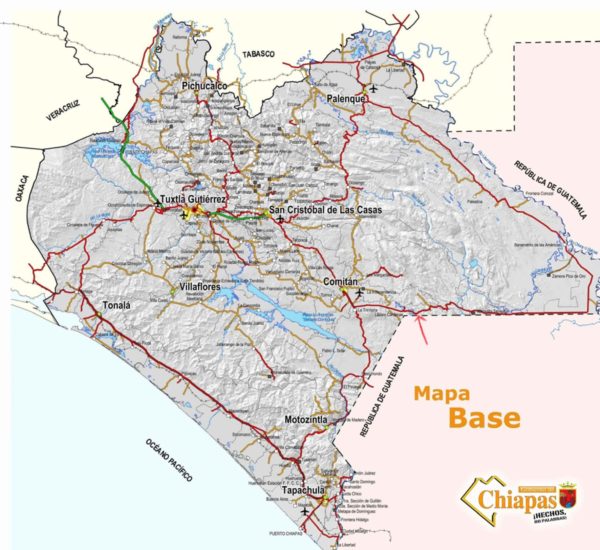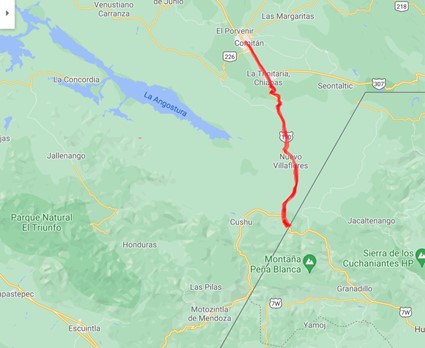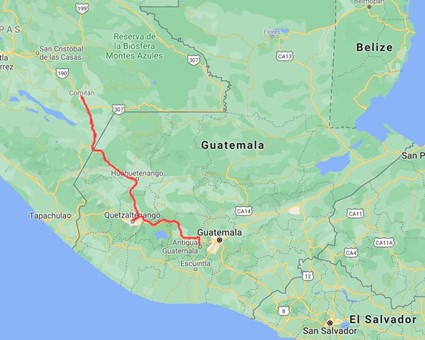Walking Near Death
HAVANA TIMES – This is blog post by our contributing writer from the US-Mexico border area in southern Arizona.
By Emilie Vardaman
I went toward Death.
It was 1986 and I was nearing forty. I’d recently left Tucson for a job in Kansas City, Missouri. In Tucson I’d been involved with the Sanctuary Movement, assisting Guatemalans and Salvadorans fleeing repression, torture, and death squads in their countries.
When I arrived in Kansas City in the fall of 1985, churches there were just beginning to organize to assist refugees. I immediately became involved. Soon I realized I had to go to Guatemala myself to learn firsthand what was happening.
My learning began in the southern state of Chiapas, Mexico. A refugee camp in the jungles of Mexico, less than a mile from the Guatemalan border. Where sometimes, at night, Guatemalan helicopters would drop low over the camp, their thump thump thump giving warning.

Warning before bullets strafed the village. A warning, but not enough. Not enought time to jump from sleep, grab the babies, rush out the door and head deep into the jungle.
Just enough warning to let them know they or a neighbor or their daughter or son would soon die.
But I went there, to the place Death often visited. I went in daytime. I wasn’t ready to die, I knew I likely wouldn’t die—the strafing happened less by day. But I knew I’d walk close.
And today, how many in that village are still alive?

Walking out of the village, back to town, hiding in the jungle when I heard a vehicle. The army patrolled this road, and if they saw me, I’d be arrested. Visitors weren’t allowed in the camps. Hiding, crouching low in jungle’s dense green, running out when I spotted an old farm truck, waving it down for a ride.
Days later, time to enter Guatemala. A bus at dawn from Comitán in southern Mexico, then a back-of-a-truck ride to the border. Crossing a border, paying an illegal entry fee. Argue with the border guard who wanted a little of my money? The one who could prevent my entry or even have me arrested? Never a good idea.

Four hours, bumping along on a Guatemalan bus, probably an old school bus, on that road to Huehuetenango, from borderlands jungle to highlands. The paved road that dissolved to dirt and rock and cratered holes, the craters caused by bombs. “Don’t take that road,” the nuns had told me. Muy peligroso! Very dangerous.
Bouncing down that road, three to a seat, me wedged between two farmworkers. The man by the window with his head fallen to my shoulder in sleep, his machete tied at his waist, swinging, banging against my leg with each bump. Each crater.

Off the bus briefly in Huehue to stretch, then boarding again to ride south two more hours into Santa Cruz del Quiché, still in the highlands. Santa Cruz del Quiché, surrounded by villages too tiny to appear on maps. Most of the villages sites of army-led massacres. Villages that no longer existed because everyone there had been killed, the buildings burned.
South another hour, through Chichicastenango and changing busses in Los Encuentros. Cutting southeast in another old school bus, in the aisle for hours, sitting on my suitcase. But at least no longer on the road the army sometimes laced with mines.

Arriving outside Antigua in the dark. “But how do we get to town?” we asked. The driver swinging his arm to point up a steep hill to the road above.
Slip sliding our way up the hill. “I wonder when there’s a bus?” one of them said. “No, we’ll just get a ride,” I said, as I stepped into the highway and waved my arm to stop a passing truck.
Necesitamos un hotel simple y limpia. We need a clean, basic hotel. We piled into the back of the truck, and within ten minutes he’d dropped us in front of a cheap hotel where we bunked, three females sharing one bed, two males sharing one next door. I’d been a stranger before that night.
Another night, unable to sleep. Hearing the gunshots just outside of town. The next morning, I approached two women washing clothes at the neighborhood spigot. “What was happening?” They turned sad faces away, eyes downcast. As I’d feared: death squads.
Attending gatherings of leftists in little cafes, speaking of refugees and how to get information to villages. How many informers were there that night? Afterwards, scurrying down unlit streets, glancing over my shoulder at imagined footsteps. Avoiding darkened alleyways.
Another trip in 1989, as the war still raged, as activists continued to disappear, as villagers continued to be massacred. Meeting in a daycare center in Guatemala City. Sitting on the floor, my feet in a hole. The hole caused by a bomb tossed through the front window a few months previously. Thankfully, women had just taken the children into the back room for lunch. No one injured.
The daycare center, run by—and for—women whose husbands were among the disappeared. To start a daycare center, to organize at all, was considered subversive.
Stepping out of the daycare center, we knew we were being watched.
Back to the hotel. The same man who’d been reading a newspaper on the patio that morning was still there, still reading a newspaper. In the dark. And he was there the next morning, pre-dawn, and that night too. Always with a newspaper. Our own personal spy.
Was it the same paper all the time? Did he listen at our doors when we were closed in our rooms?
Meeting also in living rooms. Thirty people standing, sitting, leaning against walls. Talking with village organizers who’d slid in after we’d gathered, who disappeared when they were through talking. Who cautioned us not to acknowledge them in the market, in the streets. To acknowledge them in public would make them suspect. Make them a possible target. Make us ones also.
Meeting with the US Ambassador to Guatemala, in the US Embassy. Taken to a small theater that was far too large for our little group. An uncomfortable feeling I was being watched, turning to see the camera pointed at us. Later spotting another at the edge of the stage. They hadn’t even bothered to disguise them. Blatant intimidation.
And meeting with organizers in a village on a dirt road, helicopters suddenly appearing above, flying lower, lower. Kicking up dust and gravel, impossible then to talk.
The Guatemalans we’d been speaking with disappearing, running all directions, down every street. Me wondering if they’d be alive the next day. Wondering if we would be.
Our bus breaking down on a back road, several miles outside of Chichicastenango. At night. Flagging down a truck yet again, this time a produce truck. Hiding behind sacks of potatoes and corn. The driver didn’t want to be accused of operating an illegal taxi service. Having his truck confiscated. Going to jail. And then, well, who knew what would happen?
A third trip, 1990, in Quetzaltenango, traveling alone. Attending a concert by Nicaraguan activist Luis Enrique Mejía Godoy, one of the best concerts I’ve been to.
And once again, walking many unlit blocks back to where I was staying. Walking in the middle of the street, once more away from darkened doorways and alleys. Again, looking over my shoulder, noises making me jump.
I’ve walked near Death. Walked toward him. Sometimes looked at him more closely than I’d liked, as though he were just across the room. And yes, there were times I was afraid.
But Death never wanted me. He never stepped forward, never gave forth a greeting.
He waits.
—–
Click here to see more of Emilie Vardaman’s writing.





